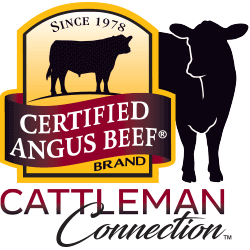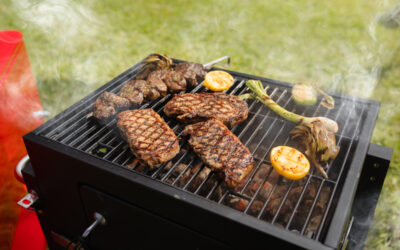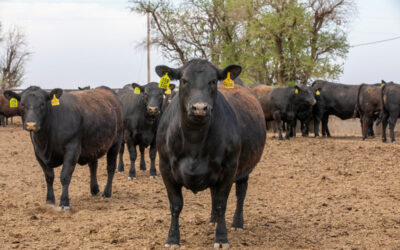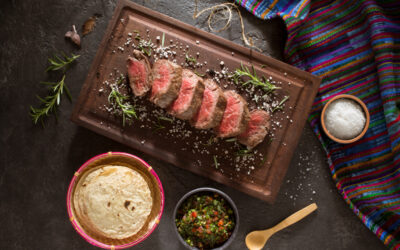

MARKET UPDATE
The fed cattle market was defensive last week, pressured by slippage in boxed beef values and an underperforming futures market. Fed cattle in the north traded in a wide range last week from $193 to $198/cwt., averaging $196/cwt. on the week, which was $2/cwt. lower. With a $186 to $188/cwt. price range on small spot market volume, the south continues to trade several dollars behind the north.
Carcass weights made a jump up to 916 lb. on the steers, up 5 lb. in the latest week’s data. Despite the absence of any normalcy in fed cattle weights this year, the chart line has shown the emergence of a summer dip in carcass weights. This will potentially replace the summer low point two weeks ago at 911 lb. for steer carcasses and 830 lb. for heifers.
A few more weeks of data is needed to confirm that this marks the summer low. If so, the combined steer/heifer summer low carcass weight will be two pounds heavier than that reached in early February. This pattern stands in stark contrast to a year ago (and most modern years) when the early February carcass weight average was 25 lb. heavier than that year’s lightest weight reached in June.
The boxed beef market traded softer last week in the expected late July pattern. Middle meat steak items are finding little buying interest as prices are quickly declining. Wholesale buyers are reluctant to “catch the falling knife,” preferring to buy hand-to-mouth, rather than be caught with expensive inventory and the risk of prices continuing lower.
Ground beef remains a summertime demand driver and the fuel continues to be poured onto that fire as 90% lean grinding beef will not soon return to abundant supplies. As we’ve reported recently, USDA Select subprimal cuts from the round continue to see price support to fulfill grinding demand.
Quality in Texas Runs High
Quality grades continue to run high as record-heavy seasonal carcass weights meter out marbling-rich product in fed steer and heifer plants. The USDA Prime grade has been the beneficiary of longer feeding periods with the national average Prime share at 10.5%. Prime percentages of 12.5%, marked in the spring of 2020 and 2021, remain the all-time records. However, the national average Prime grade is always lower in the summer, so the most recent spike to 10.5% in June captures the new record for that time period.
A deeper look into the state-by-state grading data shows a strong upward trend in carcass quality in Texas packing plants. Of the three states with the largest packing plant capacity, Texas is rarely noted for strong production of Prime or CAB carcasses. In 2023 the Texas plants averaged 4.5% Prime, well behind the national average of 9.2%. However, this March the state’s Prime share has steadily increased from 4.5% to 6.6% of fed cattle carcasses.
This would be less remarkable if Nebraska and Kansas packers were locked in a similarly increasing Prime pattern this summer. However, those two states are producing a more seasonally declining grade into the summer, despite posting impressively high Prime carcass shares when compared to prior years.
Texas steer carcass weights were last reported at close to 50 lb. higher than a year ago for the same week. Weight increases are widely noted across all regions this year but the magnitude of the increase is less pronounced as we look to more northern packers. The Iowa carcass weight is 30 lb. higher than a year ago, in comparison.
The wide fed cattle price spread is indicative of these regional differences in weights. As well, heavier weights in Texas are promoting the positive carcass quality grade trend. Also, the beef x dairy cattle supply increase in recent years has been most prevalent in Texas. This can’t be ignored as an impactful development in the carcass quality discussion in Texas. The two factors together combine to tell the story of marbling upticks in the south this summer.
Read More CAB Insider
Progress, Not Complacency
Beef demand has been exceptional because of dramatic increases in consumer satisfaction for a few decades. Since taste ranks at the top of the list when it comes to what drives consumers to choose beef, we know where our figurative “bread is buttered.”
Cutout and Quality Strong
Summer weather has begun to set in with more regions of the country set to experience hotter temperatures. This means the traditional turning of consumer focus toward hamburgers and hot dogs rather than steaks, the spring favorite.
Onward with Quality
It’s been a quality-rich season in the fed cattle business with added days on feed and heavier weights continue to push quality grades higher.





